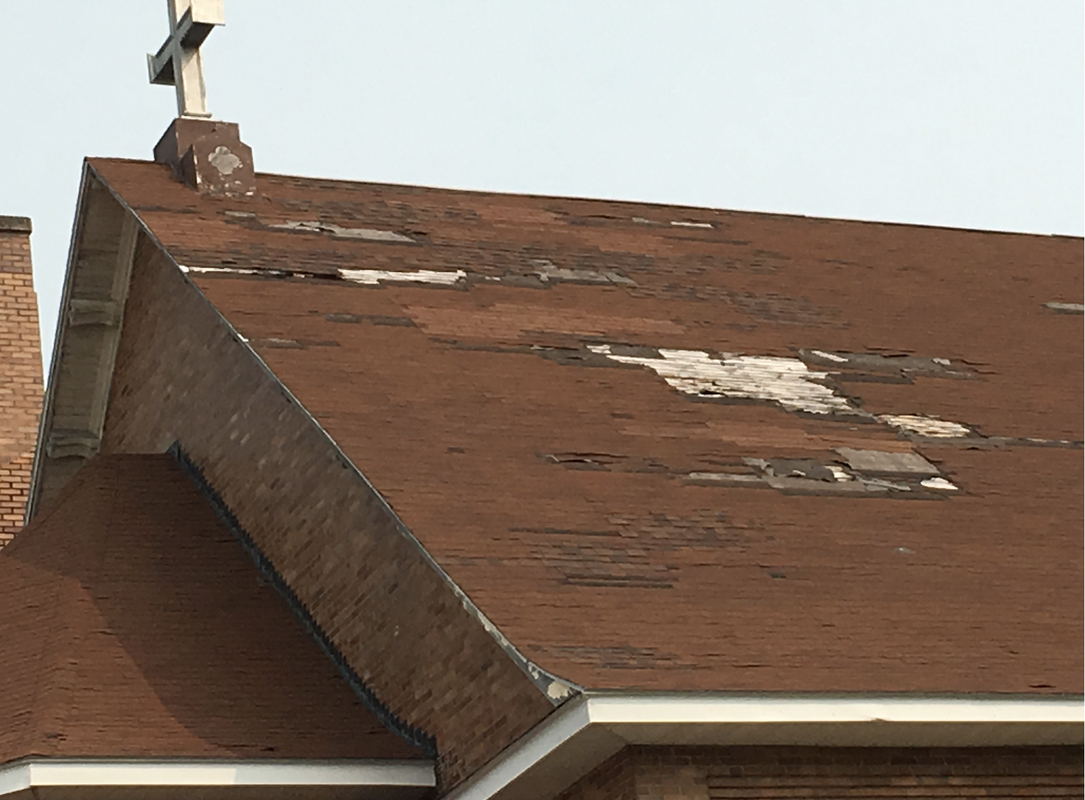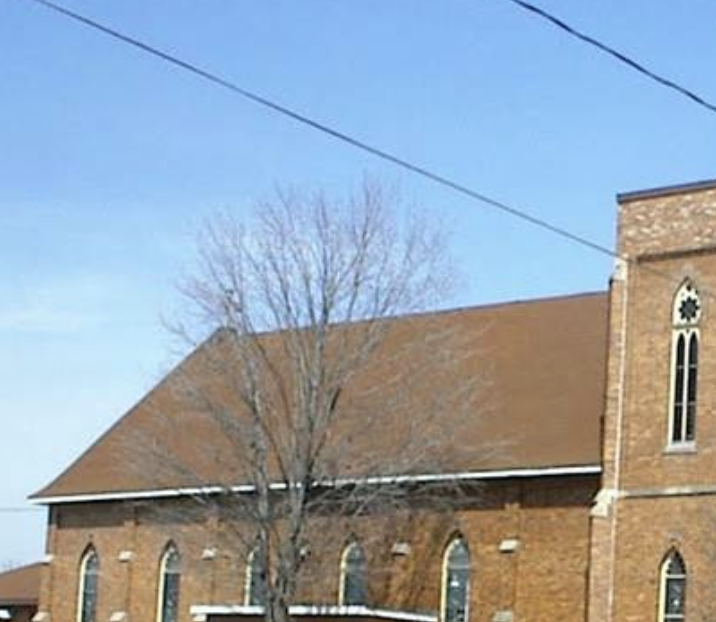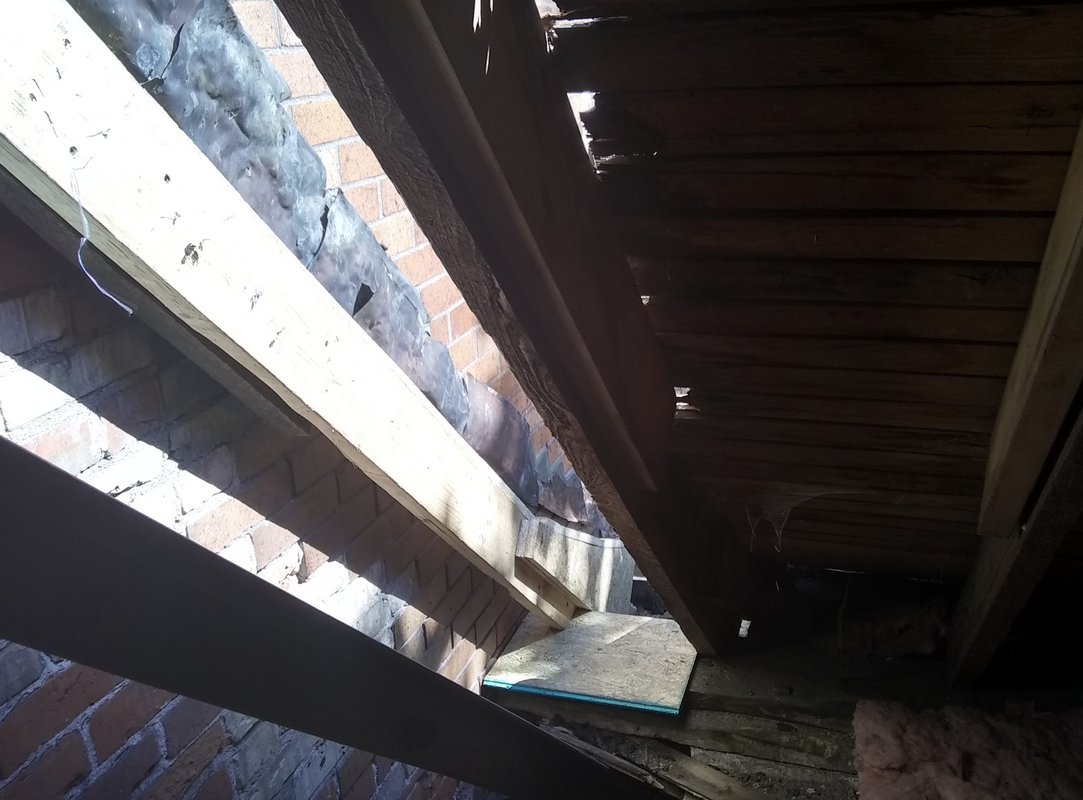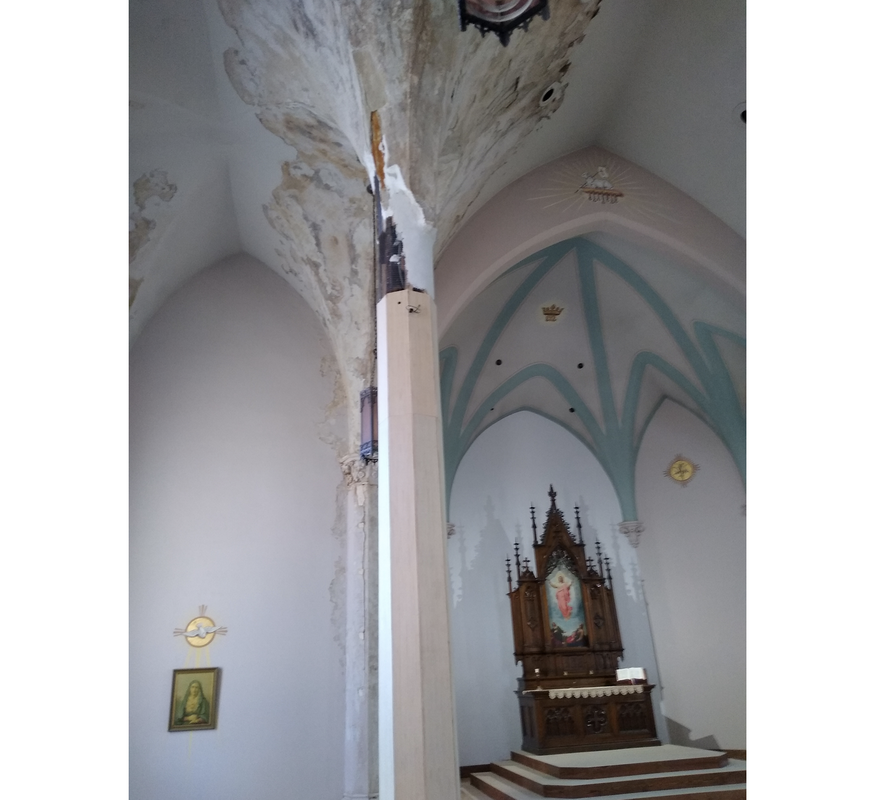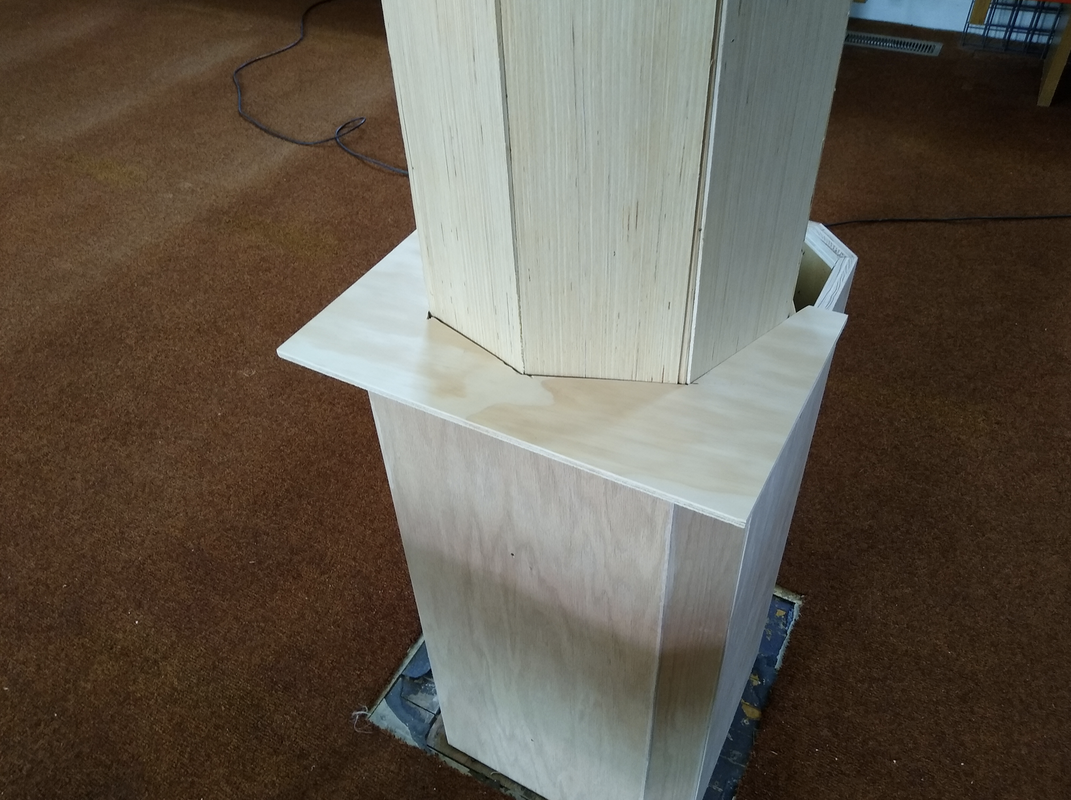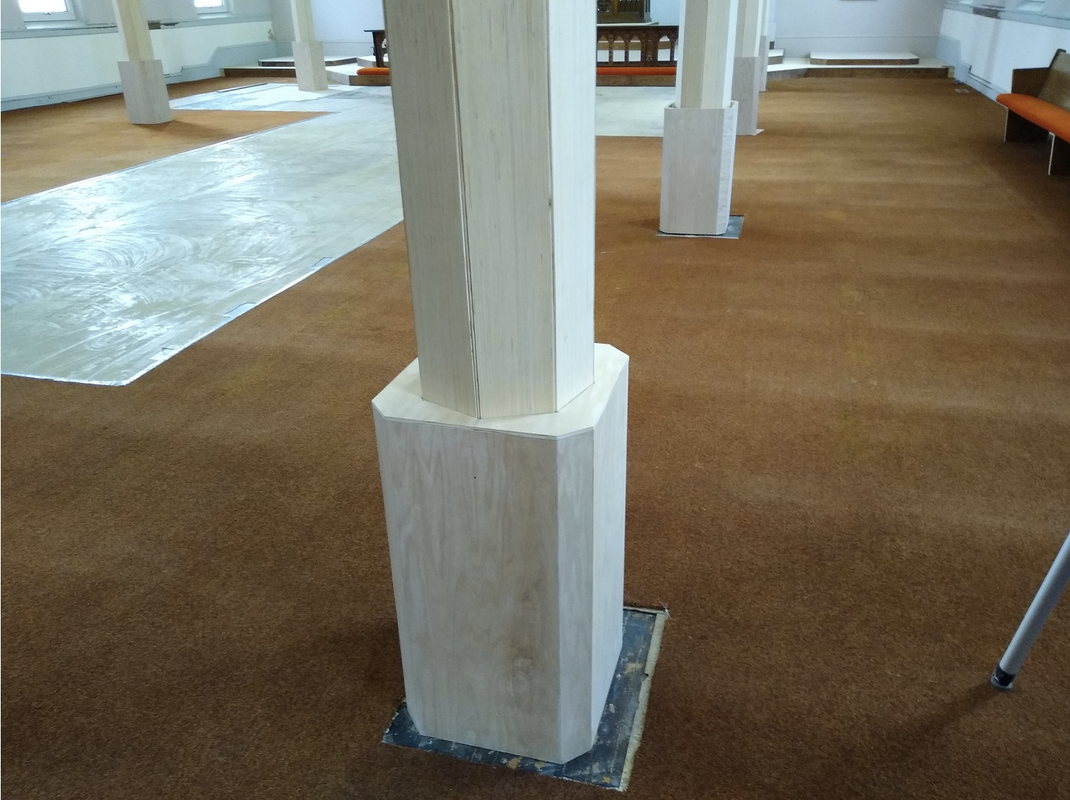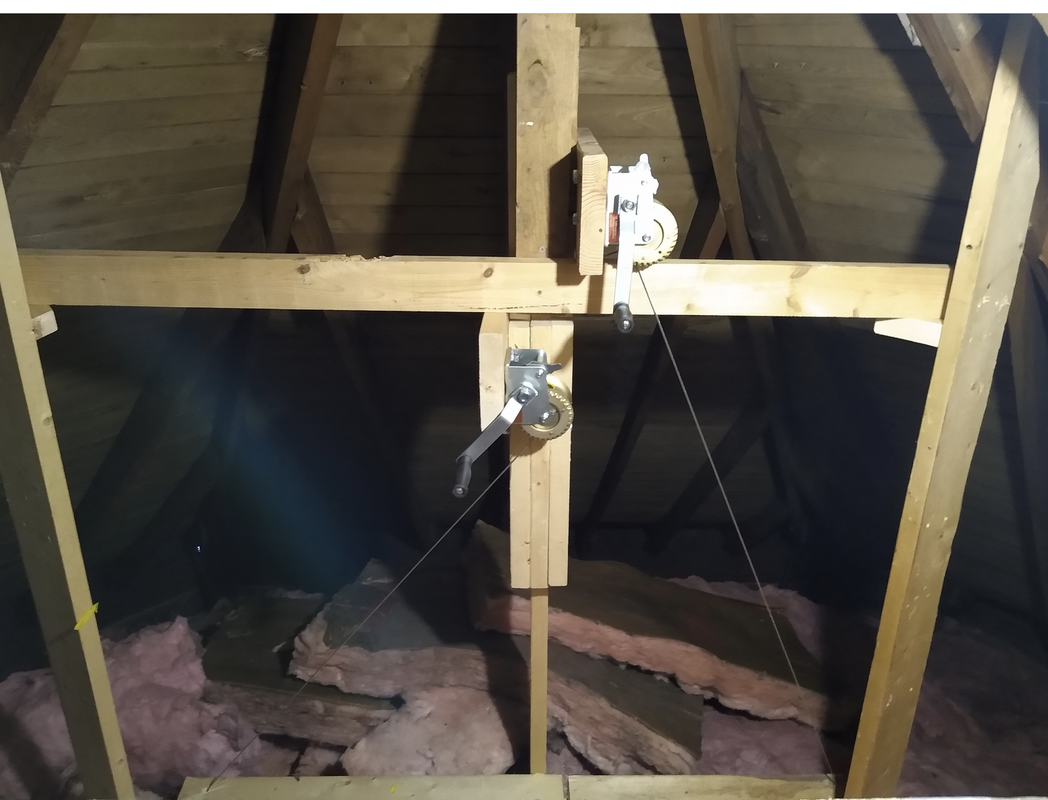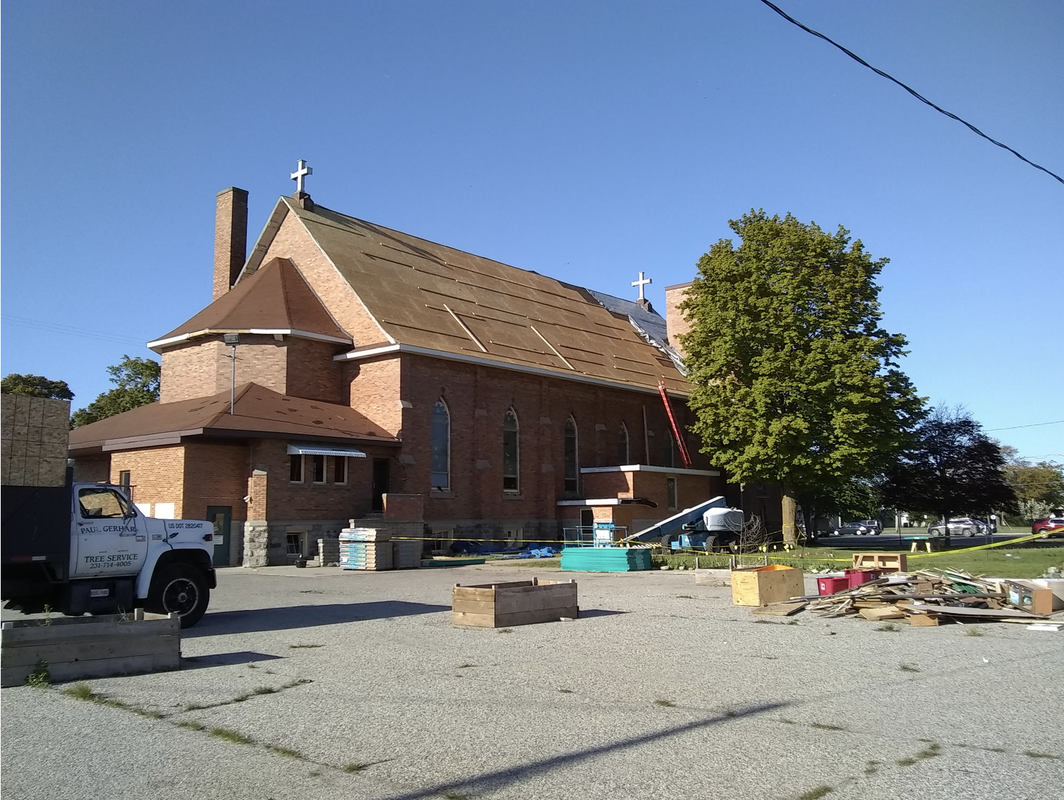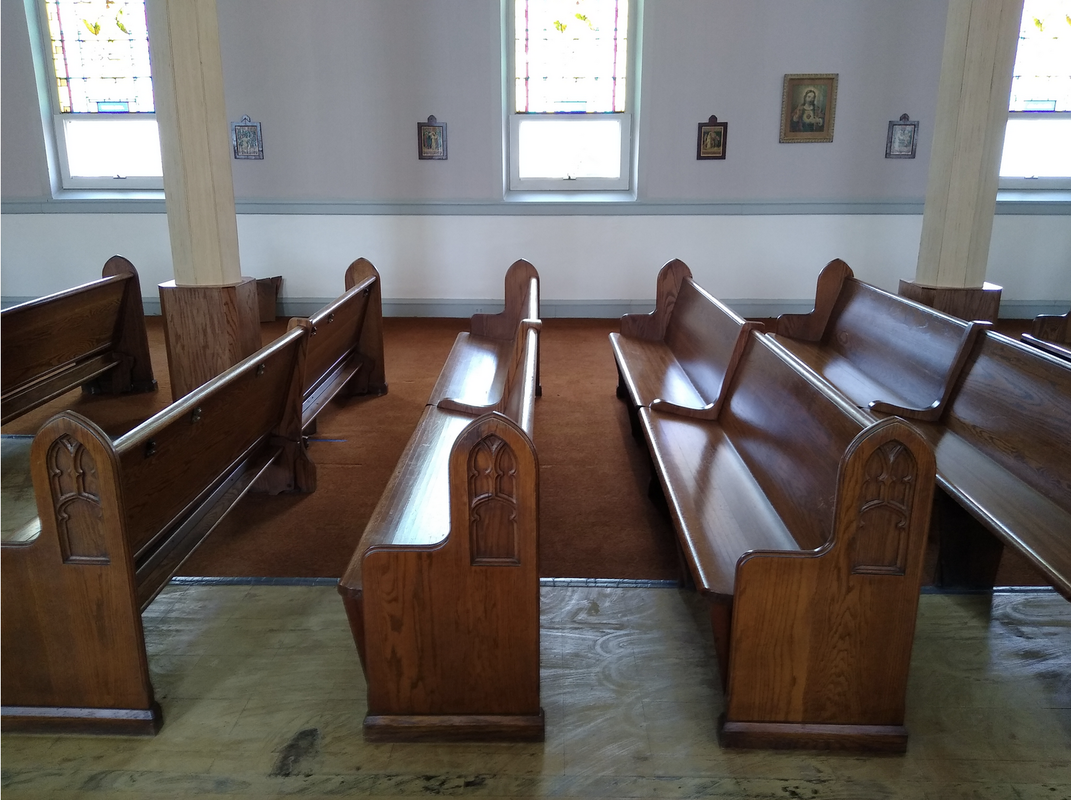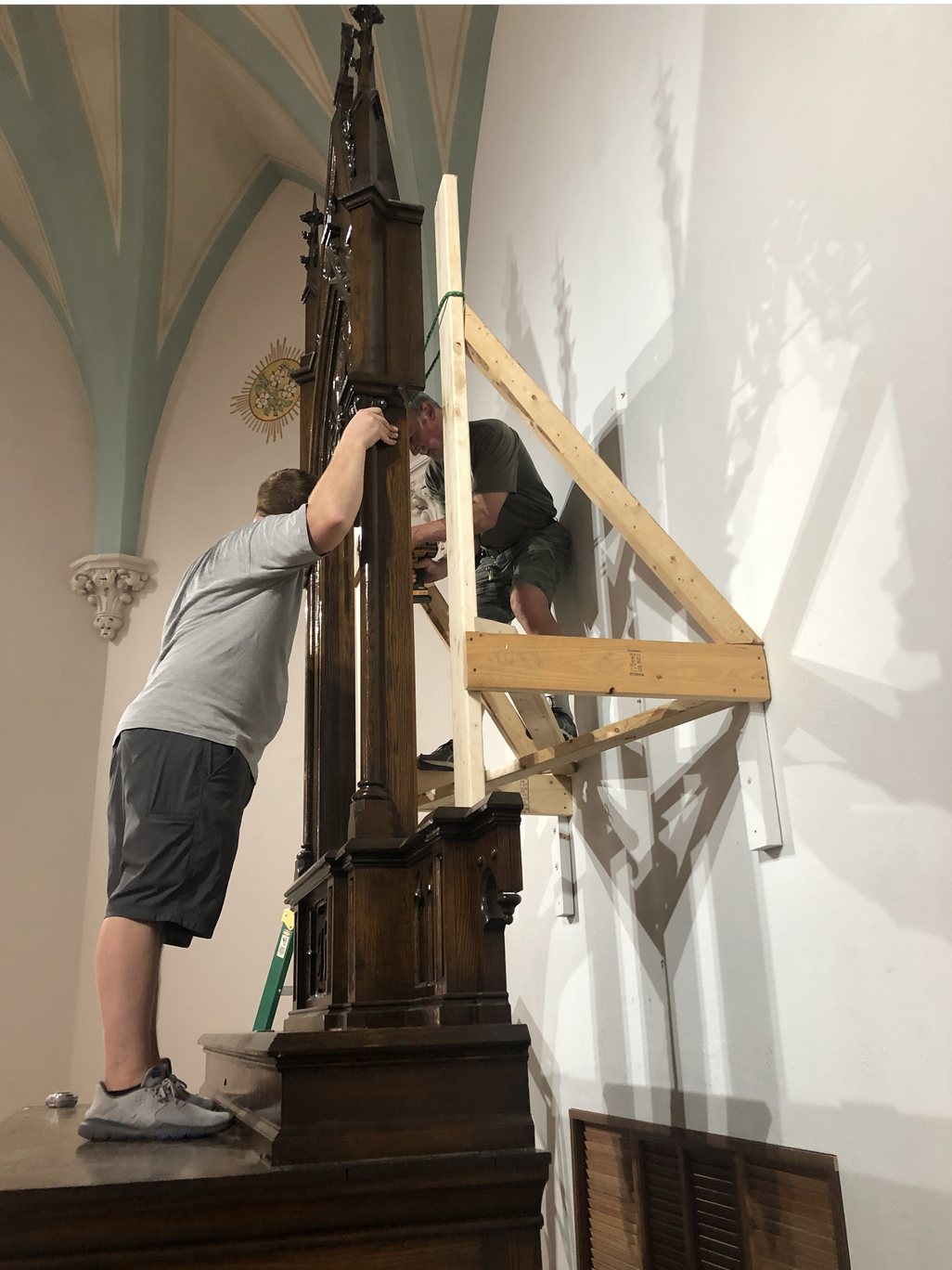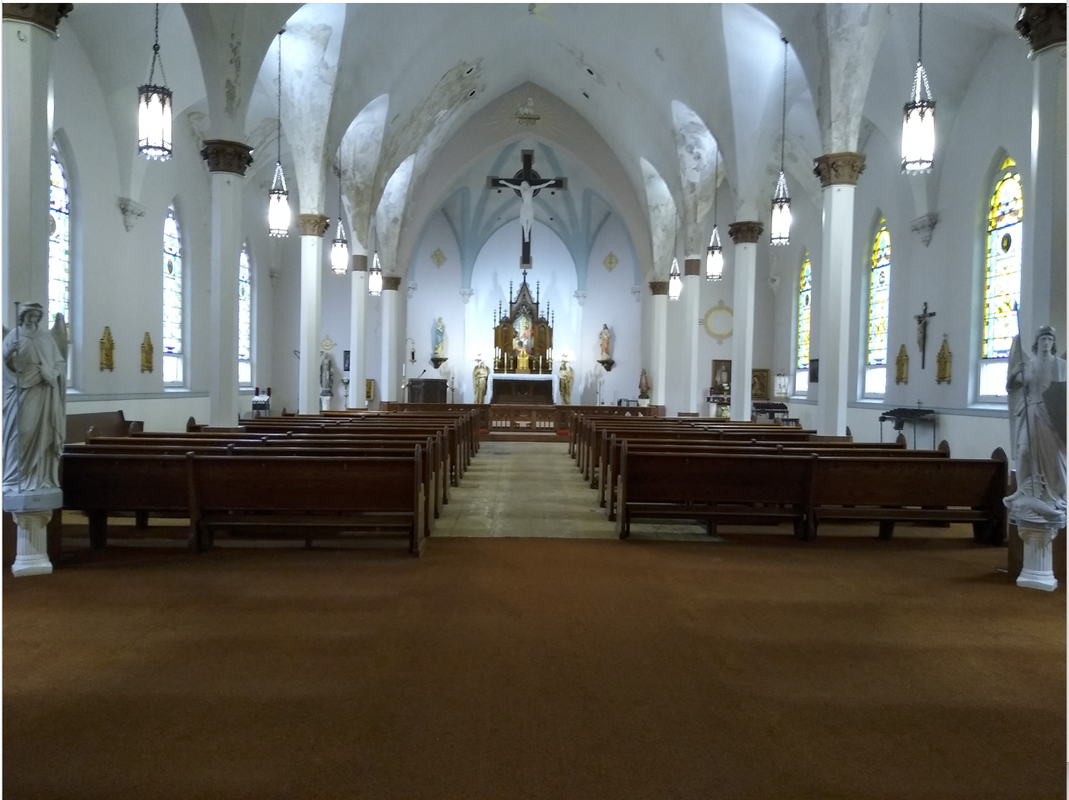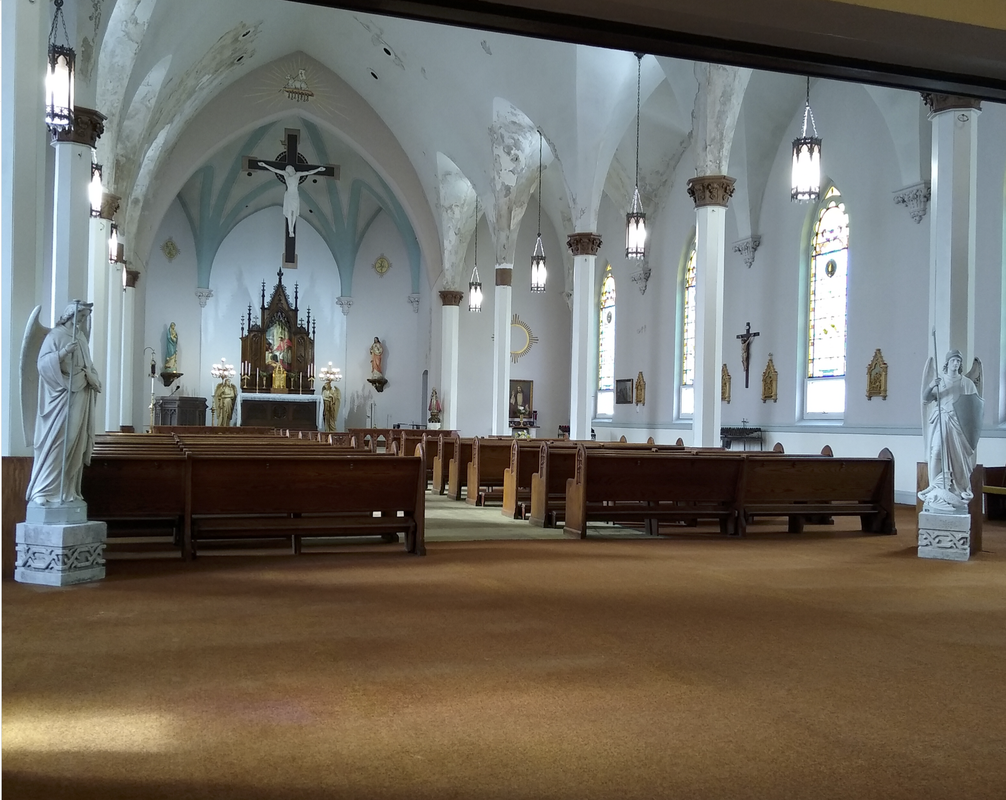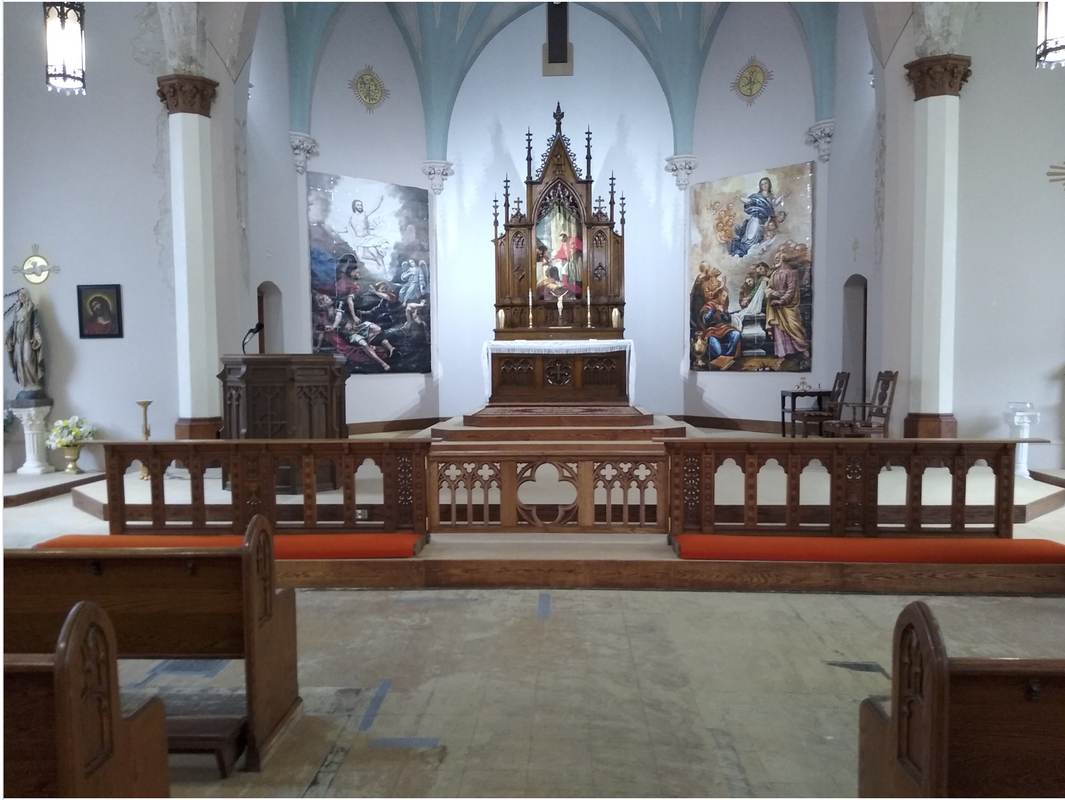|
St. Charles, Cheboygan, Restoration Timeline
March of 2019) Due to health and safety concerns St. Charles Borromeo Church was deemed “unfit” for occupancy by the county health department. Notice was given to the Church of the Nazarene, then operating a soup kitchen in the basement of St. Charles to begin preparing to evacuate the building. April 2019) A mortgage was secured by William Price to purchase St. Charles Borromeo Church, Cheboygan MI in April of 2019. Prior to finalizing the mortgage contract in April, William Price obtained two roof replacement estimates and submitted his plan for the building’s restoration. Mr. Price, a retired electrician with decades of building experience and able to perform all required labor, secured a lender and restoration work began May of 2019. May 2019) While the roof was being replaced, over 120 yards (three thirty-yard dumpsters) of assorted collectables that had been destroyed due to fifteen years of water damage and temperature extremes. This phase of the restoration took over three months to complete as ninety percent was a one man saw and sledgehammer operation. The building’s contents were stuffed in dumpsters and hauled to a landfill. September 2019) A section of the nave floor had to be replaced due to water damage. After purchasing a thousand dollars of scaffolding the entire ceiling in the nave was scraped to keep hanging paint and loose plaster from falling. This operation was merely triage. The ceiling still needs to be treated. October 2019) Stripped the 25’x 40’ sanctuary deck, using line levels in conjunction with temporary pole jacks on the concrete foundation below. The sanctuary floor was once again made flat and could eventually be resurfaced. January 2020) After a New Year event, eight of the building’s support columns had to be reinstalled for ceiling stability and returning the original basilica ambiance to the church nave. It took five months to frame out the previously eliminated support columns and cover the frames with luan. Another month to build and install the column bases and a week to scrape and repair the capitals on top of each column. Replace all incandescent lighting with LED’s. May 2020) Work on the windows both inside and out began. A tractor with a fifty-eight-foot lift capacity was rented to begin triage work on the outside of the stain glass. Scrapping, priming, and caulking that would buy some time for complete restoration later. A scaffold was constructed with some recycled lumber in the north tower and both windows were treated with primer and caulked after some rotted molding was replaced. August 2020) Back to work in the sanctuary. Removed an original 3’x12’ concrete and field stone slab via jack hammer and replaced it with three laminated beams. Installed sister supports and headers for six permanent 6x6 support posts to the sanctuary floor above. Resurfaced the deck with 4x8 MDF board before building a three-step predella for an antique (1807) seventeen-foot gothic high altar that arrived in late September. October 2020) Installed new tops on French antique communion rails purchased from “Finders Keepers Brokerage Inc.” and anchored the same through the sanctuary floor and basement ceiling with four-foot sections of all thread. Fabricated communion rail kneelers from pew cushions left by the diocese after closing the church in 1988. Replaced two fixtures, the vinyl tiles and sub floor in the women’s bathroom. Installed a urinal in the men’s bathroom and repainted both rooms. November 2020) Installed a third natural gas furnace after framing an enclosure and decorative cold air return doors, to help adequately heat the giant space in the nave. Scraped walls and ceiling in the vestibule twice and sealed both with oil base primer. Scraped and sealed north wall up to the first landing leading to the choir loft. Tore out old moldy carpet from the choir loft and patched the ceiling from the top in the attic. January 2021) Painted the sacristy walls and installed carpet tiles on the floor. Rebuilt side altar platforms. Installed one step predellas on each side altar platform. March 2021) Tore out the makeshift protestant altar in the church basement and repaired defective electrical devices. Removed pipe and fixtures for obsolete electric heating system on first floor entrance. Painted over protestant murals on basement walls (Jesus, playing electric guitar with words “Jesus Rocks”). Scraping, scaling, and sealing deteriorated walls beneath the south tower. April and May 2021) Outside, treating badly weathered windowsills that could be reached from a twenty-four-extension ladder. The lift rental was three hundred a day or a thousand a week The worst outside nave windows first, the thirty-foot window tops will have to wait. Patching the rear parking lot holes, installing wolmanized lumber and caulk to outside steps. June 2121) Starting preparations for the first Solemn High Latin Mass (July 11, 2021) at St. Charles Borromeo Church, Cheboygan in 56 years. The entire month was dedicated toward cleaning the church inside and out. The work done over the course of 26 months produced an accumulation of left-over building material in virtually every corner of building. Saw dust was on all the walls floor and furnishings. Some painting was then possible that wasn’t previously. July 11, 2021) Over three hundred people were present for a beautiful Solemn High Mass offered by the Society of St. Pius X. Approximately $8000 was donated to St. Charles for that occasion. The Society is a wonderful group of traditional priests and since that time have graced St. Charles with other low Masses in 2021. August 2021) A one-man manlift with a 26’ extension capacity was loaned to the church for an indefinite period. Getting the lift inside the building’s ten steps was a project. A 12’ ramp had to be constructed and laid over the steps while a tow strap and pulley allowed for a pick-up to hoist the lift inside the church nave. This was a three-person operation organized by Ken Brcic. Thanks to Ken, my brother-in-law, for his help and donations. For the first time the highest point of the church’s 31’ ceiling could be reached. For the next couple of months, A donated lift and plaster of paris was used to patch some of the higher breaches in church ceiling. This is an extremely slow and messy process and there is still much more to do. The ceiling is temporarily stabilized. October 2021) Had to dispose of (sledgehammer and saw) several more fourteen-foot pews purchased in the 70’s. These were part of another phase to modernize; orange upholstered no kneeler pews with peeling veneers were very out of place inside this classic church architecture. Repainted the west stairwell leading to the basement and caulked the old windows within it that must ultimately be replaced. Installed weatherstrip on the doors at the top of the steps leading to the vestibule. November 2021) repaired the floor in the south belltower and demoed a thirty-foot homemade wood ladder leading to the top. Purchased a used forty-foot aluminum extension ladder to replace the dangerous antique. January 2022} Rented a truck and trailer to retrieve four classic life-size statues from the Adirondacks. These beautiful statues were donated by Glen and Annette Burriello. It was an eighteen-hundred-mile round trip culminating in an outside operation at 22degree below zero. These beautiful acrylic statues were bolted to cement podiums. The snow covering these podiums had to be cleared and some of the bolts were sawn due to ice. It took two weeks to remove the dirt and moss that had accumulated after seventeen years of exposure to the elements. William’s oldest son William Gabriel Price, in his workshop, made the cross used for holding the crucified Christ. Bill also used his band saw on the material salvaged from the modern wooden edifice erected by the diocese in their clumsy attempt make all things modern. William Gabriel has a website called Creative Catholics featuring his wood craft. He also leads a Gregorian Choir in Lansing MI. February 2022) Almost the entire month was devoted to building a platform in the attic above the church apse. This was a grueling project that required a platform for supporting a two hundred pound cross and corpus. The space needed for building the platform had to be accessed by traveling over a narrow eighty-foot catwalk, then entering through a two-foot brick hole, feet first. A temporary light was hung inside the dark space to see what was there to work with. A single beam allowed for standing by using one hand for balance at rafters immediately above; two studs were screwed to a couple of roof rafters six feet apart and another horizontal across the beam. Two more four-foot 2x6’s screwed to the new studs then back toward the brick entrance hole framed the deck, then finished off with eight more 2x6 deck boards. Two boat winches and thirty-five feet of cable on each were bolted to the new studs. Both cables through half inch holes were lowered to meet the sanctuary floor. The crucifix was raised twenty-three feet within the apse space. Piece of cake! Mach and April 2022) St. Charles took possession of twenty twelve-foot antique pews that harmonized with the architectural antiquity of old St. Charles Church. The pews were manufactured in the 1890’s and residing in a New York Catholic church that was recently sold to a private individual. The cost of shipping these beautiful pews was more than the pews themselves. A fourteen-foot ramp was constructed to eliminate seven of the ten steps required to enter the church. When the pews arrived the tractor trailer backed up to the ramp and the six of us unloaded the cargo in about two and a half hours. It took over a month to repair place and bolt them to the floor, a floor that eventually needs to be replaced. A note from William Price Many smaller and more tedious projects were not mentioned in this timeline, but this semi detailed sketch conveys the general chronology of work done over the last three years at St. Charles Borromeo, Cheboygan, MI. I didn’t keep a diary during this lengthy work effort and have obviously failed to mention those that donated, came to my aid when asked or volunteered before being asked. Though I did most of this alone I am very thankful for those that pitched in. It always seems to come when I needed it most. Finally, so many prayers got us this far… I will however mention my wife, Carleen Price, she helped me every day. |
Proudly powered by Weebly
